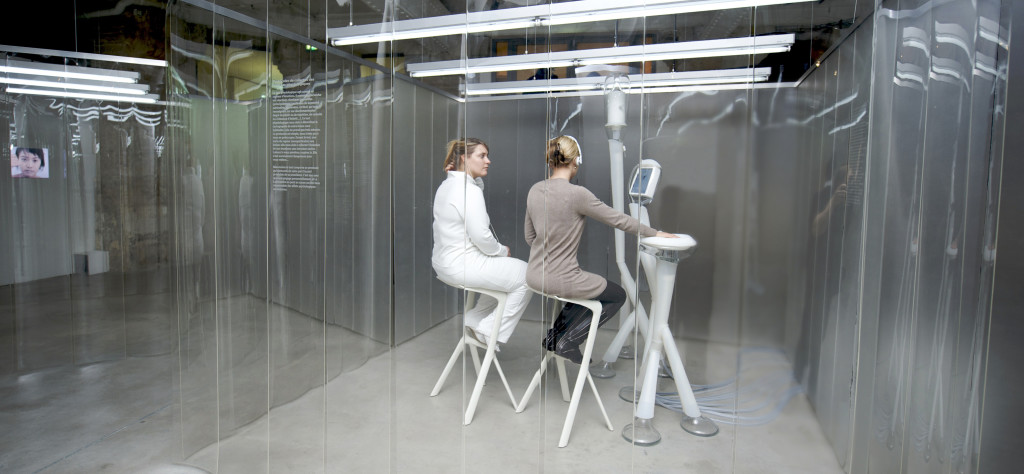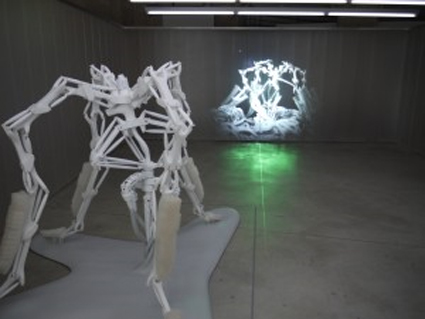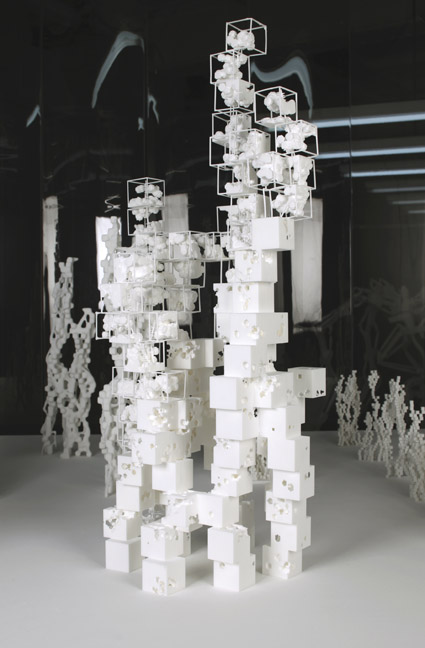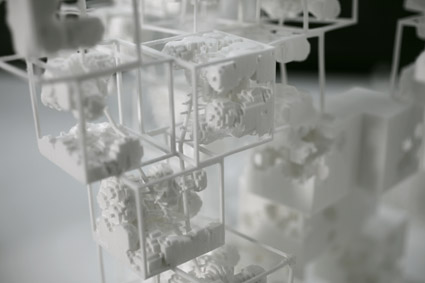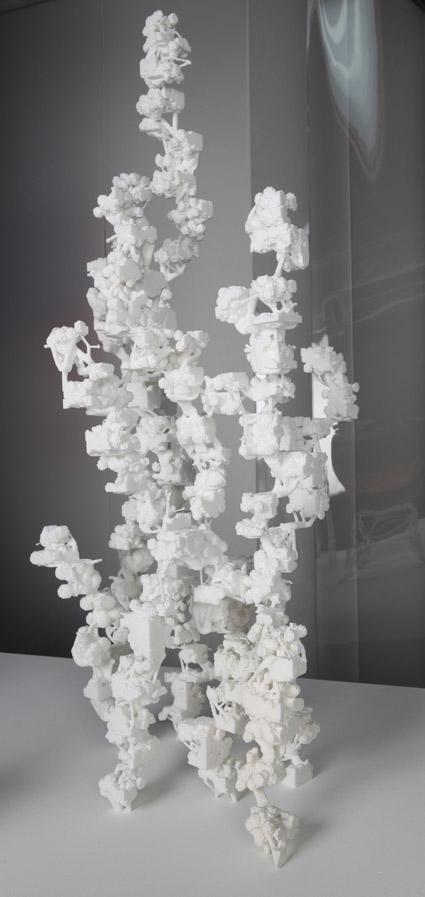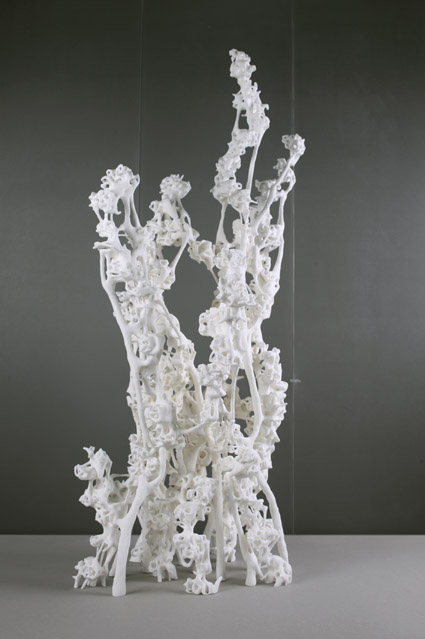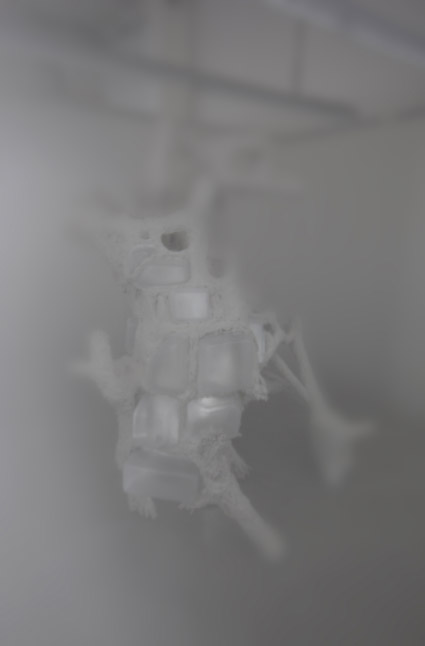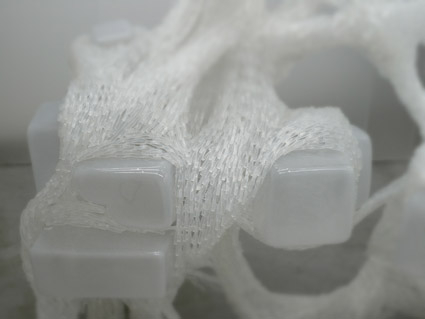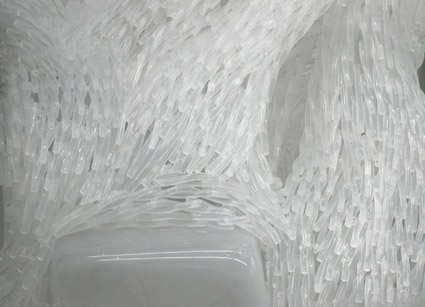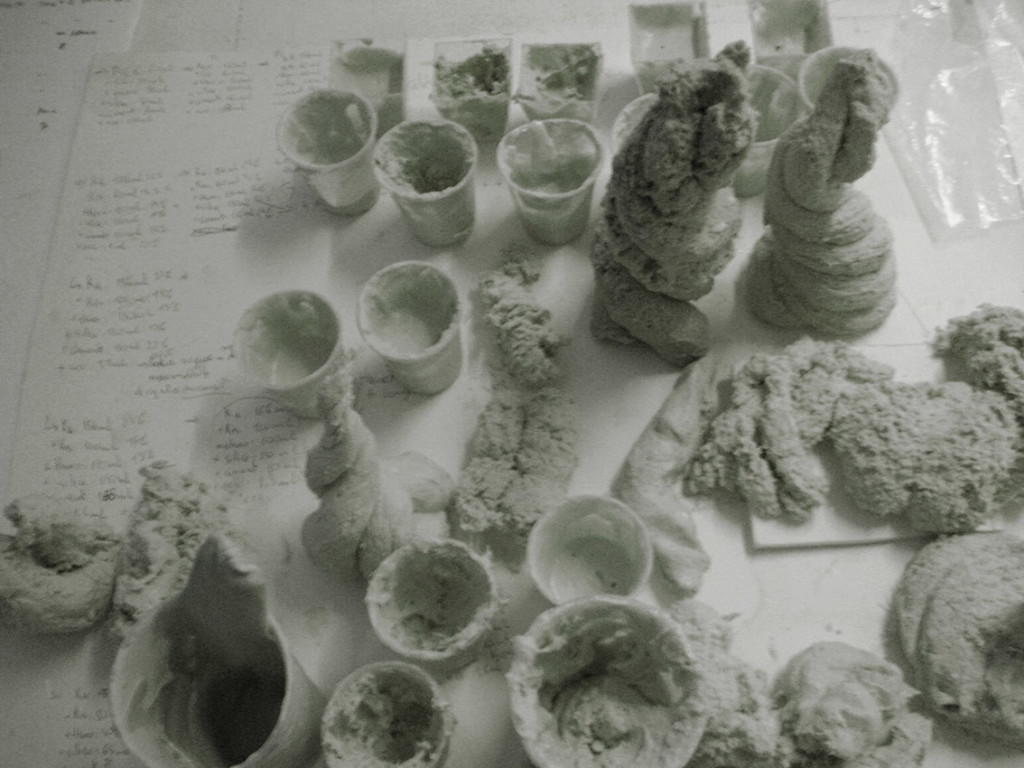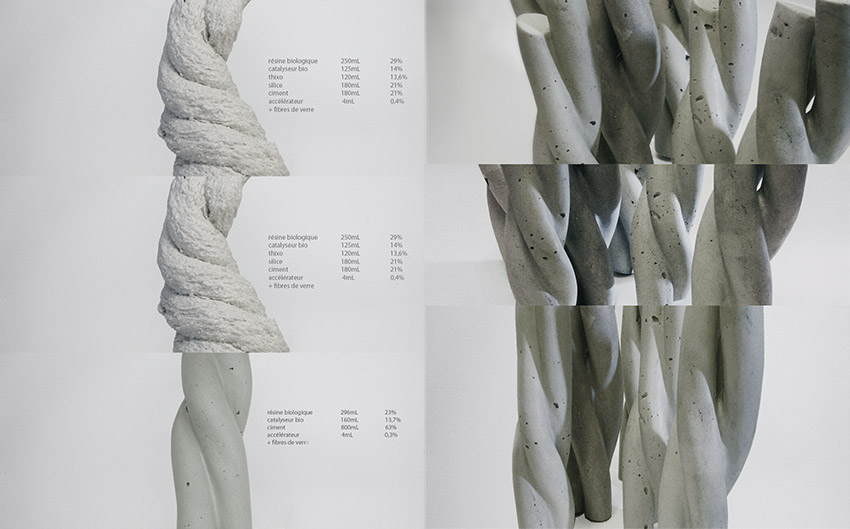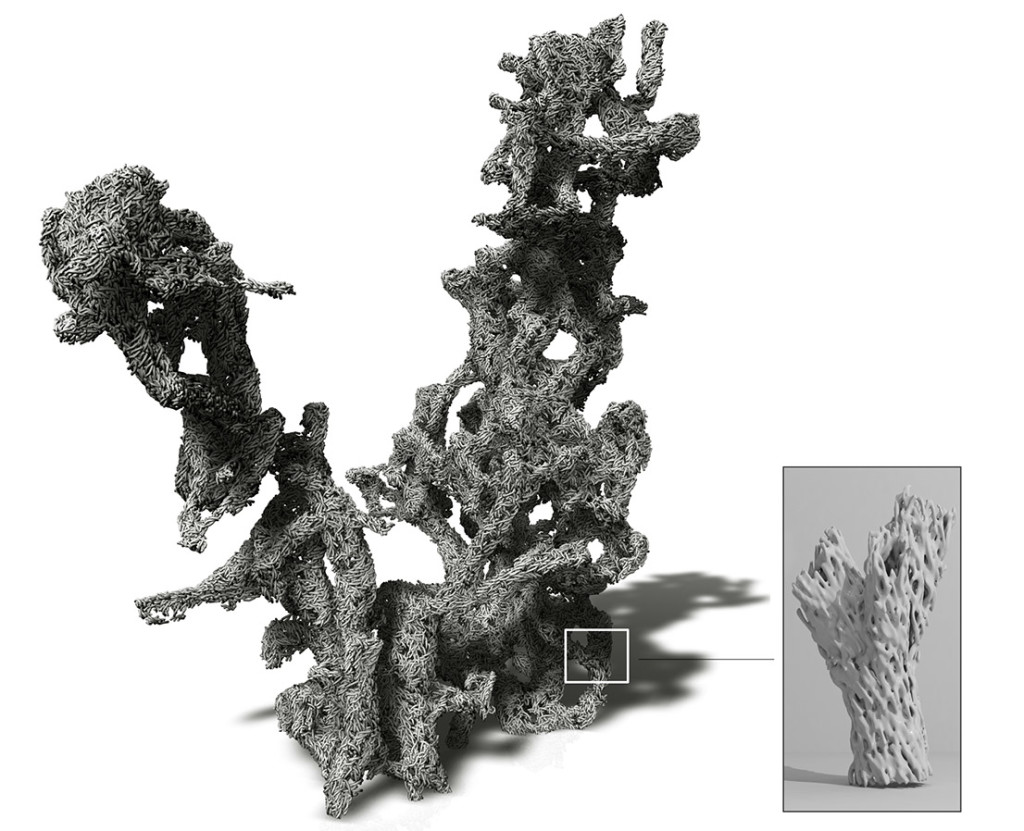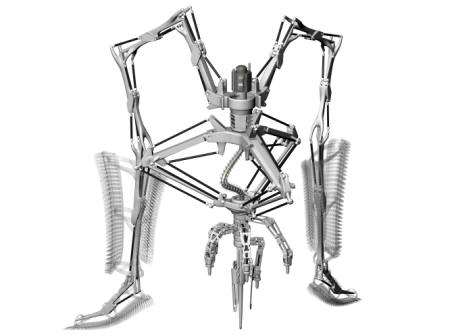
Initiated by Le Laboratoire, 4 rue du Bouloi, 75001 Paris / 2009-2011
All documents on: blog/architecturedeshumeurs/
PDF Catalogue (english) / 2 mo
AD (Architecture Design-text/pictures-10 pages) / 18 mo
From January 22, 2010, the studio R&Sie(n) will render visible a project exploring new modes of architectural structuring and transaction:
‘’Architecture of Moods’’
Date : 2010-11
Architect: New-Territories / Francois Roche
with main partners François Jouve, Stéphanie Lavaux, Kiuchi Toshikatsu, Stephan Henrich
Key dimensions: exhibition-research on 600 Sq m
Client: Le Laboratoire, Paris, France / Kunsthaus Graz, Austria / Museum Tinguely, Basel, Switzerland /
An architecture of moods is based on the potential which contemporary sciences offer to reread the human corporalities via their physiology and their chemical balance. This assumption of an architecture of mood attempts to make palpable and prehensible, through bio-technologies, the emotional transactions of the “body animal” and its neuro-chemistry, so that this one informs us of his adaptation, its sympathy, of its empathy, confronted to a situation, to an environment to create the condition of an emerging logic, an emerging architecture from our own pathology, fragility and vulnerability, our pathos and subjective matters…our psyche and unconscious mind.
Animist, vitalist and machinist, the architecture of Moods rearticulates the need to confront the unknown in a contradictory manner by means of computational and mathematical assessments.
It is a tool that will give rise to “Multitudes” and their palpitation and heterogeneity, the premises of a relational organization through a social bio-protocol, where Data are both digital and analogue, from codes and human substances, ‘’incestuously’’ simultaneous.
The research is organized on several levels:
– From the physiology of “humeurs” (captation of human bio-chemistry)to physio-morphological computation.
– From physio-morphological computation to Mathematical operators for structural optimization (emerging logic through Data)
– From the “Algorithm(s)” to bio-knit physicality
including Robotic process and Bio-cement weaving (material expertise)
Text:
Urban experiment of flat, fat growing processes and entropic indeterminism.
Scenario:
1) Extraction of human chemistry data though a protocol of interview and through Nano-particles.
1.1) Elaboration of mathematics (theory of belonging) approach to reveal the “malentendu” (misunderstanding) between the notion of “free will” and the headless bio-chemistry concentration (dopamine, serotonin, adrenaline, cortisol) to reveal the multitudes of morphologies of living (internal and osmotic logic between cells).
1.2) Aggregation of “volumetric” habitats through task-cellular automata.
2) Developing a mathematical script in C++ based on recursive and incremental approximation by Francois Jouve to generate an emerging structure as a resulting geometry, with structural optimization, where trajectories and forces of compression-tension are calculated simultaneously.
3) Developing a bio-cement, with polymerization specificity to construct physically this (n)certain, complex metabolist fragment (without any mold or standardized repetition).
3.1) Developing a machinism process to secrete and extrude the biopolymers sticks and realize a weaved system and intricate territory.
3.2) Releasing the structure from achievement and shape control, to engage a step-by-step re-negotiation of “the movement going to be done”.
———————–
This experiment presents the opportunity to interrogate an obscure area that could be called “the emission of desires” through the capture of physiological signals based on neurobiological secretions, and to implement a chemistry of the “humeurs” of future citizens, taken as inputs generating a diversity of habitable morphologies and the relationships between them. This research is directly influenced by the concepts of ‘’body without organ’’ and a ‘’desirable machine’’ of Antonin Artaud and Gilles Deleuze.
The groundwork for this architecture of “humeurs” is a rereading of the contradictions inherent in the expression of these desires, both those that traverse public space through the ability to express a choice by means of language, on the surface of things, and those that are underlying and perhaps more disturbing but just as valid. By means of the latter we can consider the body as a desiring machine with its own chemistry – with dopamine, hydrocortisone, melatonin, adrenaline and other molecules secreted by the body itself that are imperceptibly anterior to the consciousness these substances generate. Thus the making of architecture is inflected by another reality, another complexity, that of the acephalous body, the animal body.
An architecture of “humeurs” means breaking into language’s mechanism of dissimulation in order to physically construct ” malentendus ” and process of resistance, in a term of destabilizing the order of discourse and determination from architect corporatist conveniences and conventions. A station for collecting these signals has been offered. It makes it possible to perceive these chemical variations and capture the changes in emotional state so that they affect the geometries emitted and influence the construction bottom-up protocol. The expertise and control of tooling, Technic and Sciences, as computation-Robotic, as AI-deep learning are actually the main mode to maintain and reproduce the structures of power, it’s time to launch the antidote.
‘’if you think this world bad, you should see some of
the others’’ P.K.Dick
+++++++++++++++++++++++++++
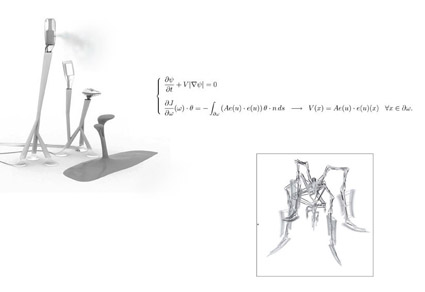
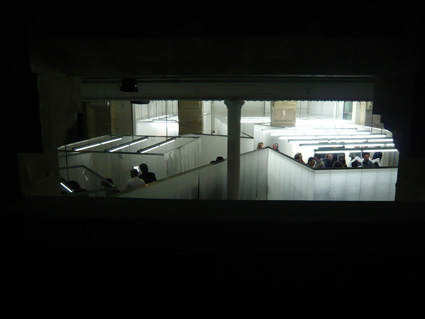
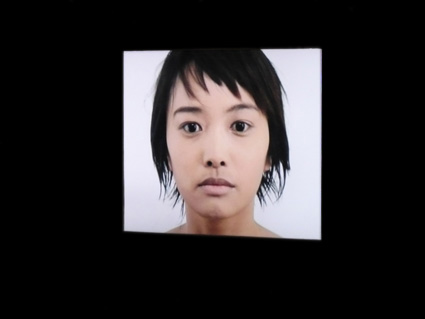

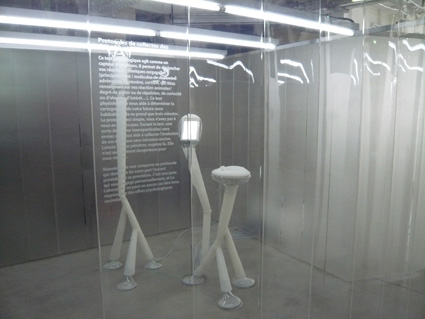
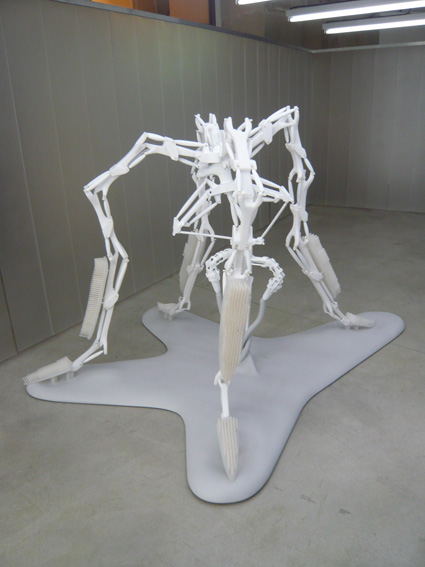
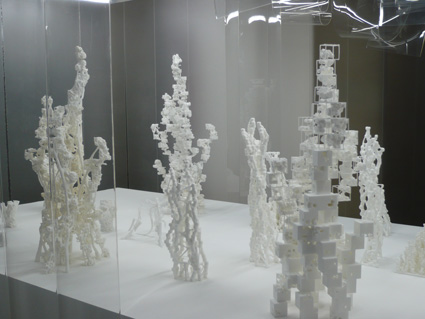
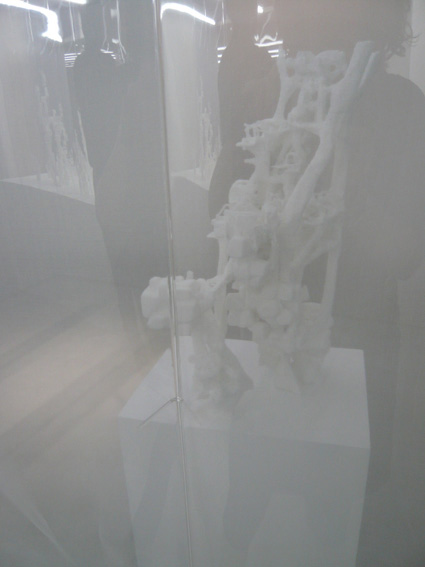
pictures R&Sie(n) / Matthieu Kavyrchine
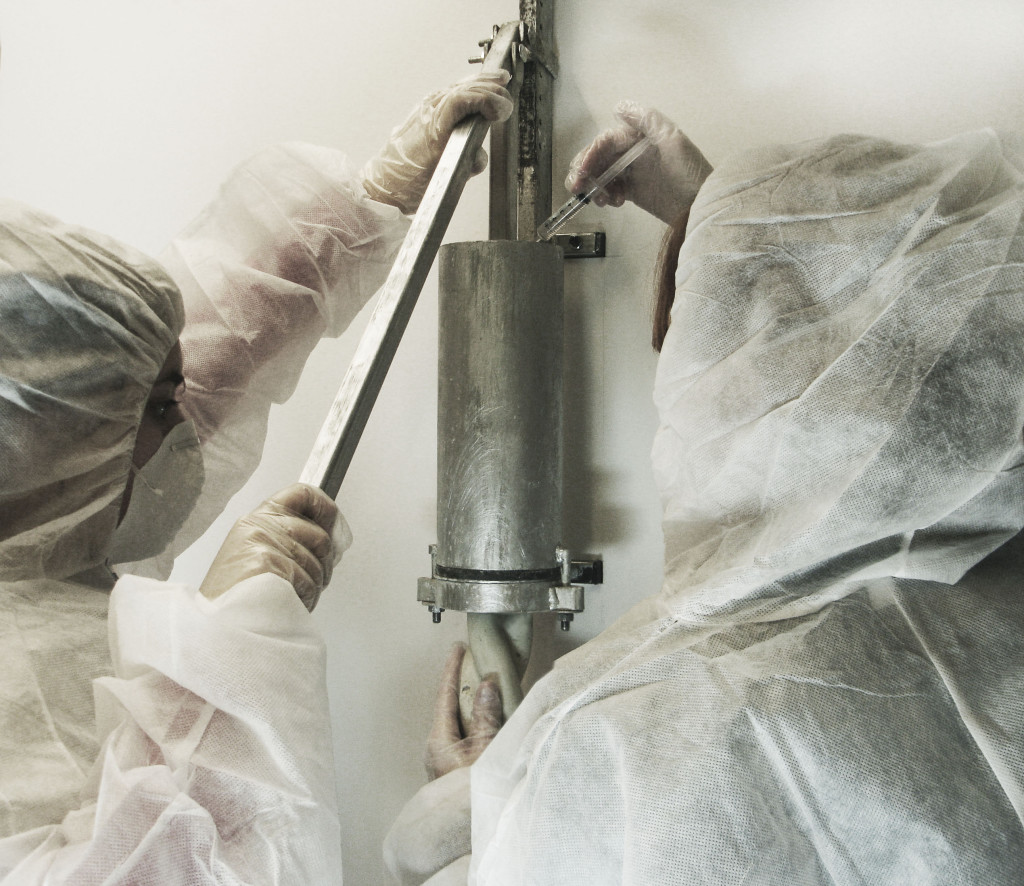
(French version below)
An architecture “des humeurs”
Apparatuses for the architectural assemblages on transactional and structuring protocols :
– One aspect is comprised by computational, mathematical and machinist procedures designed to produce an urban structure following certain protocols of improbable and uncertain successive indeterminations, aggregations and layouts to rearticulate the link between the individual and the collective. The layout of the residential units and the structural trajectories are conceived and developed here as posterior to the morphologies that support social life and not as an a priori. These structures are calculated following simultaneously incremental and recursive structural optimization protocols whose principle result is the concurrently generated physicality and morphology of an architecture.
The “algorithm” developed by François Jouve differs from “directly calculated” structural methods such as calculating a load-bearing structure of a building after it is designed. In contrast, the “algorithm” allows the architectural form to emerge from the trajectories of the transmission of forces simultaneously with the calculation that generates them. The “algorithm” is based on (among other things) two mathematical strategies, one taken from the derivative initiated by the research of Hadamard and the other from of protocol of the representation of complex shapes by Cartesian meshing through level set.
The mathematical process of empirical optimization makes it possible for the architectural design to react and adapt to previously established constraints instead of the opposite.
– The other aspect is the collection of data regarding the chemical body, based on the
neurobiological emissions of each future owner. Until now the collection of information involved in the residential unit protocol has been exclusively based on visible and reductive data (surface area, number of rooms, access mode and party walls).
Instead, this experiment will be the occasion to interrogate an obscure area that could be called “the emission of desires” by the capture of these physiological signals based on neurobiological secretions, and to implement a chemistry of the humors of future purchasers, taken as inputs generating a diversity of habitable morphologies and the relationships between them.
The groundwork for this architecture of “humeurs” is a rereading of the contradictions inherent in the expression of these desires, both those that traverse public space through the ability to express a choice by means of language, on the surface of things, and those that are underlying and perhaps more disturbing but just as valid. By means of the latter we can appraise the body as a desiring machine with its own chemistry – dopamine, hydrocortisone, melatonin, adrenaline and other molecules secreted by the body itself that are imperceptibly anterior to the consciousness these substances generate. Thus the making of architecture is inflected by another reality, another complexity, that of the acephalous body, the animal body.
An architecture of “humeurs” means breaking into language’s mechanism of dissimulation in order to physically construct misunderstandings. A station for collecting these signals is offered. It makes it possible to perceive these chemical variations and capture the changes in emotional state so that they affect the geometries emitted and influence the construction protocol.
_______________________________________________________________________________________________________________________
The research is organized on several levels: – From the physiology of humors to misunderstandings The humors collection is organized on the basis of interviews that make visible the conflict and even schizophrenia of desires, between those secreted (biochemical and neurobiological) and those expressed through the interface of language (free will). Mathematical tools taken from set theory (belonging, inclusion, intersection, difference, etc.) are used so that these “misunderstandings” produce a morphological potential (attraction, exclusion, touching, repulsion, indifference, etc.) as a negotiation of “distances” between the human beings who are to constitute these collective aggregates. – Misunderstandings This means taking conflicts into account as an operational mode, allowing architecture to become their transactional vector. “I’d love to but at the same time / and maybe / not / and the contrary.” These misunderstandings are directly influenced by the pathologies of collective living: Claustro (phobia-philia) / Agora (phobia-philia) / Xeno (phobia-philia) / Acro (phobia-philia) / Nocto (phobia-philia) / Socio (phobia-philia) / Neo (phobia-philia) – From the misunderstanding of humors to physio-morphological computation These relational modes are simultaneously elaborated within the residential cell and on its periphery in relation to the neighbors. The multiplicity of possible physio-morphological layouts based on mathematical formulations offers a variety of habitable patterns in terms of the transfer of the self to the Other and to others. This is an informational area, a Temporary Autonomous Zone (T.A.Z.) allowing future purchasers to have access to a morphological combinatorics with multiple permutations produced jointly by the expression of their avowed desires and their indiscrete biochemical secretions. The volume of an entity-unit is 12 x 12 x 12 meters. This is the basis on which our calculations and hypotheses have been made. – From physio-morphological computation to the multitude A multitude of aggregations of physio-morphological layouts is organized according to parameters of chronological positioning and variable distances between the entities (collective, tribal, human clusters or conversely singleton units). This includes public layouts and micro-places. – Mathematical operators for structural optimization As indicated above, these are mathematical processes whose purpose is to achieve an incremental and recursive optimization (ex-local, local and hyper-local) that simultaneously calculates and designs support structures for the physio-morphologies. Forms are fabricated only by successive iterations that link, by physically and structurally coagulating, the interstices between morphologies so that they support each other. The calculations satisfy precise inputs (constraints and characteristics of the materials used, initial conditions, dead load and transfer of forces, intensity and vectorization of these forces, etc.). – The “algorithm(s)” Basically this is the name of a physio-morophological residence unit. But more precisely it’s a name that characterizes a structural aesthetics thought as a geometry resulting posterior to the morphological fabrication of residential areas. The point is to emancipate architecture from the conceptual logic that takes structuration as the starting point, and instead allow the emergence of a physical matrix that can react to the multiplicity of morphologies and the ambiguity of the desires of “future purchasers.” Thus this open-source mechanism can replace the determinist and predictable topology of collective habitats. – From the “Algorithm(s)” to bio-knit physicality Development of a construction protocol that can deal with complex, non-standard geometries through a process of secretion, extrusion and agglutination. This frees the construction procedure from the usual frameworks that are incompatible with a geometry constituted by a series of anomalies and singularities. – Toolings / Robotic process The development of a secretion and weaving machine that can generate a vertical structure by means of extrusion and sintering (full-size 3D printing) using a hybrid raw material (a bio-plastic-cement) that chemically agglomerates to physically constitute the computational trajectories. This structural calligraphy works like a machinist stereotomy comprised of successive geometrics according to a strategy based on a repetitive protocol. This machine is both additive and formative. It is called Viab02. – Tooling / Bio-cement weaving (material expertise) Development of a viscous and adherent secretable material so as to produce this morphologically complex structure (a material and procedures similar to the contour-crafting developed with the Behrohk Khoshnevis Lab at USC for the “I’ve heard about” project). This is a bio-cement component, a mix of cement and bio-resin developed by the agricultural polymers industry that makes it possible to control the parameters of viscosity, liquidity and polymerization and thus produce chemical and physical agglutination at the time of secretion. The mechanical expertise of this material is made visible (constraints of rupture induced by traction, compression and shearing, etc.). This material emits low Co2 _______________________________________________________________________________________________________________________Animist, vitalist and machinist, the architecture of “humeurs” rearticulates the need to confront the unknown in a contradictory manner by means of computational and mathematical assessments.
The architecture of “humeurs” is also a tool that will give rise to “Multitudes” and their palpitation and heterogeneity, the premises of a relational organization protocol.
_____________________________________
Une architecture des Humeurs
Le Laboratoire, 4 rue du Bouloi, 75001 Paris, Open from Friday to Monday 12-7 pm
Crédits /-R&Sie(n) / Le Laboratoire / 2010
-Scénario, design, production : R&Sie(n) / François Roche, Stéphanie Lavaux
Associés à :
-François Jouve / Process mathématiques
-Marc Fornes, Winston Hampel, Natanael Elfassy / Computations
-Stephan Henrich / Process et Design Robotique
-Gaëtan Robillard, Frédéric Mauclere, Jonathan Derrough / Design et Process de captations physiologiques
-Berdaguer et Péjus / Scénario Nano-récepteurs
-Mark Kendall / Microneedles
-Delphine Chevrot / Takako Sato / “The Lift”
-Candice Poitrey / Interview Physiologique
&
-Chris Younes / Introduction aux «substances affectives »
&
-Jiang Bin, architecte
-Laura Bellamy
-Rosalie Laurin
————————————————————————————————
Une architecture des Humeurs
Expérience inédite, l’exposition-recherche « Une architecture des humeurs », articule plusieurs champs d’exploration au service de l’architecture ; entre neurobiologie, machinisme et protocoles mathématiques qui œuvrent comme modes opératoires relationnels, transactionnels et structurels.
R&Sie(n) rend visible à partir du 22 janvier 2010 la première étape d’une recherche qui explore de nouveaux modes d’agencement, de structuration et de transaction de l’architecture :
– D’une part, au travers de procédures computationnelles, mathématiques et machinistes afin qu’une structure urbaine soit engendrée sur des protocoles d’indéterminations, d’agrégations et d’agencements successifs, improbables et incertains, qui réarticulent le lien entre l’individu et le collectif. L’agencement des habitats et des trajectoires structurelles est ici pensé et développé comme postérieur aux morphologies, support de vie sociale (et non comme un préalable). Ces structures sont calculées sur des protocoles d’optimisation structurelle, à la fois incrémentaux et récursifs qui font apparaître, simultanément, la physicalité et la morphologie d’une architecture comme un principe résultant.
L’ « algorithme » développé par François Jouve se différencie des méthodes structurelles à «calcul direct» comme la structure porteuse d’un bâtiment, dimensionnée postérieurement à son design. A contrario, l’«algorithme» permet à la forme architecturale d’émerger des trajectoires de transmissions des forces, simultanément au calcul qui les génère. L’ «algorithme» est basé (entre autre) sur deux stratégies mathématiques, celle issue de la dérivée de formes initiées par Hadamard et celle issue d’un protocole de représentation des formes complexes sur un maillage cartésien par courbe de niveau (level set).
C’est un process mathématique d’optimisation qui permet à l’architecture de réagir et de s’adapter aux contraintes préalables, aux conditions initiales et non l’inverse.
– D’autre part, au travers de la collecte d’informations de l’ordre du corps chimique, basé sur les émissions neurobiologiques de chacun des futurs acquéreurs : jusqu’ici, la collecte des informations du protocole d’habitation s’appuyait exclusivement sur des données visibles et réductrices (superficie, nombre de pièces, mode d’accès et mitoyenneté de contact…).
A l’opposé, cette expérience est l’occasion d’interroger la zone trouble ‘’de l’émission des désirs’’, par la captation de ces signaux physiologiques basés sur les sécrétions neurobiologiques et d’implémenter la chimie des humeurs des futurs acquéreurs comme autant d’inputs générateurs de la diversité des morphologies habitables et de leur relation entre elles.
«L’architecture des humeurs» se pose comme préliminaire de relire les contradictions de l’émission même de ces désirs ; à la fois ceux, qui traversent l’espace public par la capacité à émettre un choix, véhiculé par le langage, à la surface des choses…, et ceux préalables et plus inquiétants peut-être, mais tout aussi valides, susceptibles de rendre compte du corps comme machine désirante et de sa chimie propre ; dopamine, cortisol, mélatonine, adrénaline et autres molécules sécrétées par le corps lui-même, imperceptiblement antérieur à la conscience que ces substances vont générer. La fabrication d’une architecture est ainsi infléchie d’une autre réalité, d’une autre complexité, de celle du corps acéphale, du corps animal…
«L’architecture des humeurs» c’est rentrer par effraction dans le mécanisme de dissimulation du langage afin d’en construire physiquement les malentendus. Une station de collecte de ces signaux est proposée. Elle permet de percevoir les variations chimiques, et de saisir ces changements d’état émotionnel afin qu’ils affectent les géométries émises et influencent le protocole constructif.
_______________________________________________________________________________________________________________________
_______________________________________________________________________________________________________________________
Animiste, vitaliste et machiniste, « L’architecture des humeurs » réarticule le besoin de se confronter à l’inconnu, et cela contradictoirement, au travers d’expertises computationnelles et mathématiques.
« L’architecture des humeurs », c’est aussi un outil susceptible de faire émerger des « Multitudes », et de leur palpitation, de leur hétérogénéité, les prémisses d’un protocole d’organisation relationnelle.
